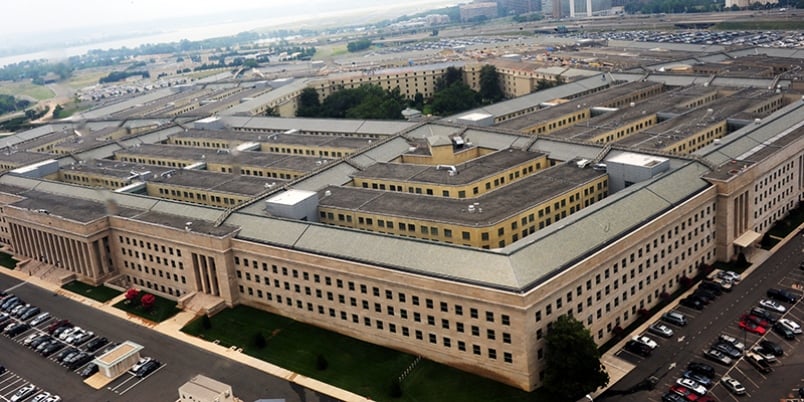
The Program Executive Office for Ships is bracing for a range of new ship classes to join the fleet in the coming years and is taking steps to ensure the requirements and acquisition communities, and the industrial base, are ready for all the new work.
To support new operational concepts, the amphibious community will get a Light Amphibious Warship, which goes into construction in Fiscal Year 2022. The surface community will get a DDG (X) (also known as DDG (Next), planned to go into construction in 2028, to take the place of today’s destroyers and cruisers and haul around large missiles and radars for a potential high-end conflict. The logistics and auxiliary community is getting a slew of new ships this decade, including a small Next-Generation Logistics Ship (NGLS), a new oceanographic survey ship, a multi-purpose Common Hull Auxiliary Multi-mission Platform (CHAMP) and more.
Tom Rivers, the executive director for amphibious, auxiliary and sealift programs at PEO Ships, said last week that “with the amount of design work and new platforms projected to come online … we are establishing a new position within PEO Ships focused solely on basing emerging ship acquisition programs.”
Christina Zimmer, who has worked on past programs in that portfolio, including CHAMP, “is going to serve as our first Futures Director, as providing executive-level expertise and oversight for concept design work, giving the requirements community a single authoritative resource for developing and transitioning these programs.”
Rivers also said during his panel presentation at the Surface Navy Association’s annual symposium that a Shipbuilding Industrial Base Task Force stood up last year to align ship and submarine construction, maintenance and modernization activities and ensure there were sufficient resources across all activities. As the Navy branches into more small programs, it will be all the more important to remained aligned across the entire shipbuilding portfolio so that changes in one program don’t hurt another.
“By doing this, we’re gaining a better understanding of the cross-cutting challenges across the industrial base that in turn allow us to develop strategies and better promote the resiliency of the critical business base,” Rivers said.
He spoke specifically about one upcoming program that has been highlighted as important to the future of Navy and Marine Corps operating concepts: the medium logistics ship, now called NGLS.
“We’re looking for something that’s smaller than the existing T-AOs, T-AKEs, T-AOEs,” Rivers said, which is what will enable it to support a fleet of distributed small warships, operating among and blending in with local commercial traffic without standing out as a large military target for the adversary.
“It’s probably going to be operated by Military Sealift Command. MSC had sent out in December a solicitation looking to get an existing commercial platform to use for experimentation on, which would kind of help inform the requirements. I will tell you the requirements are still in development.”
Rivers noted that the strategic mobility and combat logistics division in the chief of naval operations’ staff (OPNAV N42) was heading up the requirements-writing effort for NGLS and was focused on the refuel, resupply and rearm missions.
MSC hosted an industry day last week, which Rivers said more than 20 companies attended. After sharing initial concept studies at the industry day, MSC hopes to further refine the vision for NGLS by releasing an industry study request for proposals later this quarter, with the goal of awarding several companies contracts for work that would inform the ship’s final requirements.
“One of the challenges that we’re having is a Navy [underway replenishment] is unique to Navy ships, and we’re trying to figure out how to best integrate that into a commercial platform, because we want NGLS to be based upon a commercial platform as much as possible,” Rivers said.
Using parent designs has been a recent favorite strategy for the Navy, which is trying to move quickly on multiple ship classes while keeping cost and risk down.
The Constellation-class frigate was based upon the Fincantieri FREMM design used in the Italian and French navies today. The Light Amphibious Warship, which is in industry studies and early design work now, will have to rely heavily on existing designs to keep up with the quick pace of the program.
Naval Sea Systems Command head Vice Adm. Bill Galinis said during the panel that the next large surface combatant wouldn’t be able to leverage a mature design in quite the same way, but he said there were plenty of ship design lessons learned to pull from as the Navy considers what it wants to escort aircraft carriers, launch hypersonic missiles and other potential future missions.
“My perspective is, where the FFG(X) made use of that parent design, there were a number of good frigate designs operational around the world today that we could really leverage off of. I don’t think – we’re kind of working through the requirements piece, but I think what we may find is that there are probably not parent designs out there that we can leverage along the same line like we did with the frigate program,” Galinis said while moderating the panel with Rivers and other acquisition officials.
“That being said, there will be a lot of lessons learned that we can pull off of not only the frigate design but also the current DDG-51 design, some of the work that was done on the LPDs, even the work that’s going on in the submarine area with Columbia and Virginia right now. So I do think there are absolutely a lot of lessons learned that we could pull over to the DDG(X) design as we continue to refine the requirements and then start to mature some of the design concepts.”





